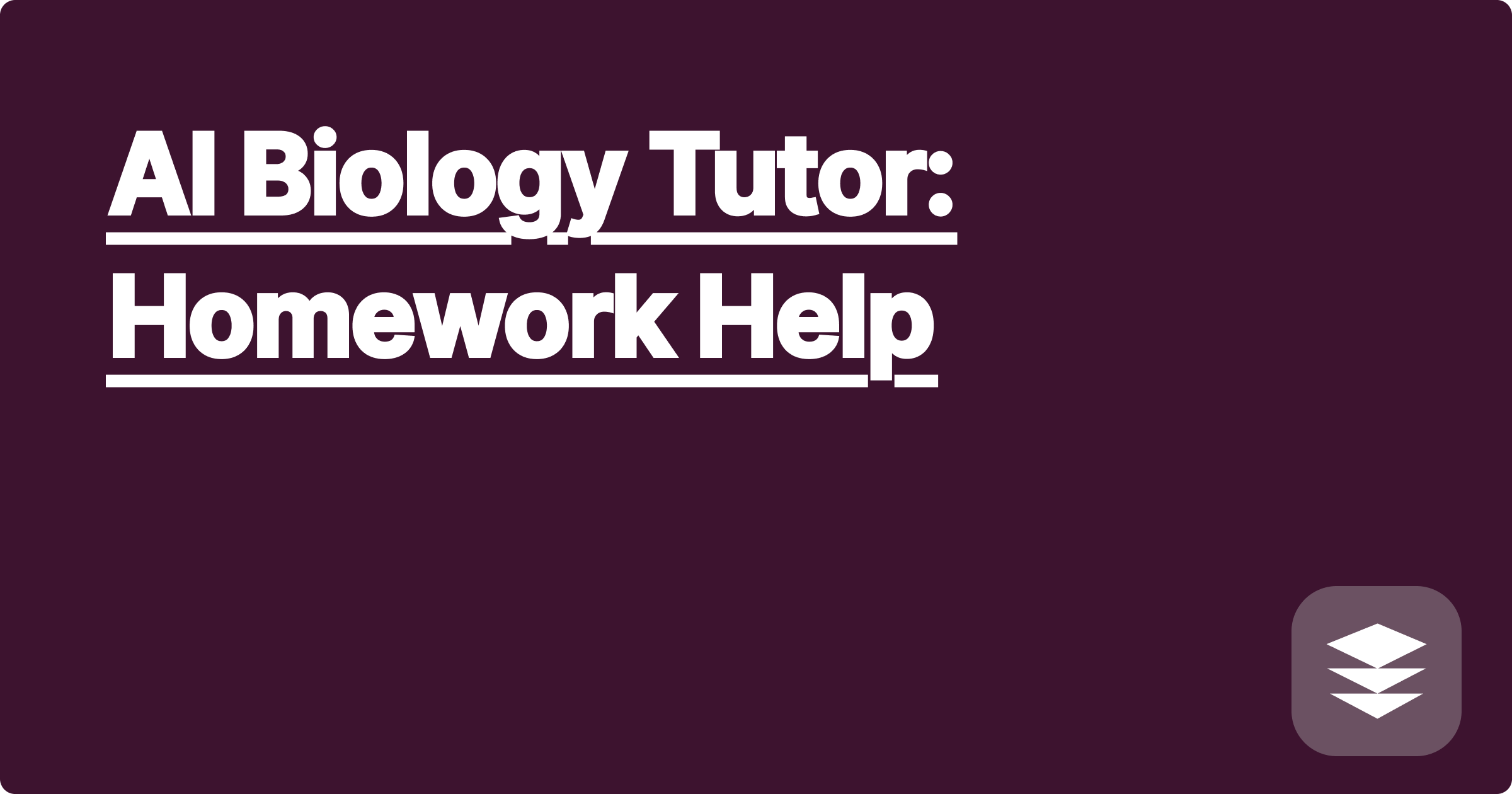
STEM fields, particularly biology, often present a steep learning curve for students and researchers. The sheer volume of information, complex concepts, and intricate processes can be overwhelming. Fortunately, the rise of artificial intelligence offers a powerful new set of tools to navigate these challenges. AI can provide personalized tutoring, instant feedback, and access to a vast knowledge base, effectively bridging the gap between complex biological concepts and student understanding. This emerging technology has the potential to revolutionize how we approach STEM education and research, opening up new avenues for exploration and discovery.
This shift towards AI-assisted learning is not merely a technological advancement; it's a fundamental change in how we access and process information. For STEM students, it means moving beyond rote memorization and towards a deeper understanding of underlying principles. For researchers, it represents a powerful tool for accelerating discovery, allowing them to quickly synthesize information, explore new hypotheses, and analyze complex datasets. This transformative potential of AI in biology has significant implications for the future of the field, promising to empower a new generation of scientists and innovators.
Biology, as a field of study, presents a unique set of challenges. It encompasses a vast and ever-expanding body of knowledge, ranging from molecular mechanisms to ecosystem dynamics. Students are often tasked with understanding complex processes, memorizing intricate pathways, and applying theoretical concepts to real-world scenarios. Traditional learning methods, like textbooks and lectures, can sometimes fall short in providing the individualized support and interactive learning experiences that many students need. Furthermore, research in biology often involves navigating complex datasets, formulating testable hypotheses, and staying up-to-date with the latest scientific literature. This requires significant time and effort, which can be a barrier to progress. The complexity and breadth of biological information necessitate innovative tools and approaches to facilitate effective learning and research.
Artificial intelligence offers a powerful set of tools to address the challenges inherent in learning and researching biology. AI language models, such as ChatGPT and Claude, can provide personalized tutoring and on-demand explanations of complex concepts. These models can answer questions, clarify confusing terminology, and provide step-by-step guidance through problem-solving exercises. Additionally, computational knowledge engines like Wolfram Alpha can be invaluable for performing calculations, visualizing data, and accessing curated biological information. By leveraging these AI tools, students and researchers can enhance their understanding, improve their efficiency, and gain a deeper appreciation for the intricacies of biology. These tools are not meant to replace human interaction and critical thinking, but rather to augment them, providing a powerful support system for navigating the complexities of the field.
Engaging with AI tools for biology homework help involves a structured approach. First, clearly define the specific problem or concept you need help with. This could be anything from understanding the Krebs cycle to calculating allele frequencies. Next, choose the appropriate AI tool for the task. For conceptual understanding and explanations, ChatGPT or Claude are excellent choices. For calculations, data visualization, or accessing specific biological data, Wolfram Alpha is a powerful resource. Then, formulate your query or question in clear and concise language. Be specific about what you want the AI to do. For example, instead of asking "Explain photosynthesis," you might ask "Explain the light-dependent reactions of photosynthesis and their role in ATP production." After receiving the AI's response, carefully review the information provided. Cross-reference the information with other reliable sources, such as textbooks or peer-reviewed articles, to ensure accuracy and completeness. Finally, integrate the information gained into your overall understanding of the topic. This iterative process of questioning, analyzing, and integrating information is key to effectively leveraging AI for learning and research.
Consider a student struggling to understand the process of DNA replication. They could ask ChatGPT, "Explain the steps of DNA replication, including the enzymes involved." The AI would then provide a detailed explanation, outlining the roles of enzymes like DNA polymerase, helicase, and primase. As another example, a researcher investigating the genetic basis of a particular disease could use Wolfram Alpha to analyze gene expression data or to access information on known mutations associated with the disease. They could enter queries like "gene expression data for BRCA1 in breast cancer" or "mutations in CFTR gene." Furthermore, a student working on a genetics problem involving Hardy-Weinberg equilibrium could use Wolfram Alpha to perform the necessary calculations. They could input the allele frequencies and ask Wolfram Alpha to calculate the expected genotype frequencies. These examples highlight the versatility and power of AI tools in addressing a wide range of biological questions and challenges.
To maximize the benefits of AI in STEM education and research, several strategies are crucial. First, develop strong foundational knowledge in the subject matter. AI tools are most effective when used to enhance existing understanding, not as a replacement for fundamental learning. Second, cultivate critical thinking skills. Always evaluate the information provided by AI tools and cross-reference it with other reliable sources. Third, learn to formulate effective queries and prompts. Clear and specific questions will yield more accurate and relevant results. Fourth, explore the different functionalities of various AI tools. Each tool has its strengths and weaknesses, and understanding these differences can help you choose the right tool for the task at hand. Finally, embrace a growth mindset and view AI as a partner in your learning journey. By combining the power of AI with your own intellectual curiosity and effort, you can unlock new levels of understanding and achieve academic success.
In conclusion, the integration of AI into biology education and research represents a significant paradigm shift. These powerful tools offer unprecedented opportunities for personalized learning, accelerated discovery, and deeper understanding. By embracing these technologies and developing the necessary skills to use them effectively, students and researchers can navigate the complexities of biology with greater confidence and achieve their academic and professional goals. Start exploring these AI tools today and discover the transformative potential they hold for your future in STEM.
AI Chemistry Solver: Ace Exams
AI Statistics Help: Data Analysis